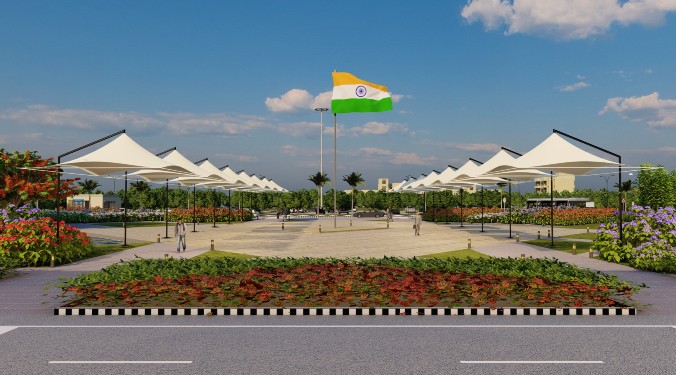Inpod– a tryst of British architecture, German technology and Indian methodology
Nilesh Jadhav, the maker of inpod is an architect trained in London, collaborated with Germans for the technology and created this inherently Indian product. Excerpts from his interview with ACE Update:
Mr Nilesh, could you brief us on the concept of ‘pods’.Each pod is a fully composite monolithic structure, which can be used as a standalone unit or as a part of a bigger structure/set up.
While a single pod is a fully functional standalone unit, two or more pods can be joined together seamlessly using in-built provisions to create bigger spaces. The number of pods together is what determines the sizes in which pod structures are available.
Each pod has standard dimensions of 5mX2.5m and multiples of its area makes up the area of larger units. The reason for these dimensions is simple; so all you need to do when you’re moving is to pick up your pod, put it on a flatbed carrier and you’re good to go!
What are the features included in these structures to make them sustainable and efficient?Inpod modules are designed to be independent and remain permanently portable if unbolted from the remainder of the structure. This enables the user to sell whole or part of the building to a new user and allows them the freedom to have the land back with minimum environmental impact.
Second hand or used inpod buildings would become a cost-effective option to enjoy the durable, high-quality of inpod modules. This feature avoids the need for re-manufacturing during the recycling process.
Centralised manufacturing and one-time transport and assembly minimises the total energy footprint of the building process.High insular nature of the core material and energy efficient climate control system ensures very low energy consumption for inpod buildings.
In addition, while relocating, all you need to do is pack up and move, leaving behind no damage or debris on the land previously occupied. This makes it an entirely low impact alternative to conventional construction.
That’s alright, however, are these portable structures durable enough? The composite material used for making inpod modules has been adapted from the yacht and aircraft building industries. It is known to have a terrestrial use lifespan of over 70 years. This is however the first time it is being used in such a way. Moreover, these materials in conjunction with the technology and the processes make inpod structures extremely strong and hardy therefore able to withstand all natural calamities as well as man-made attacks and assaults. How do you ensure the material efficiency of pods?The monolithic nature of pods ensures minimum use of materials through its unique design and innovative joinery. Assembly line process used for the manufacture of pods also minimises wastage and gives standardised products.
How do you maintain and ensure quality of each and every pod?Each pod is manufactured in a fully controlled environment at our manufacturing unit by a team of specially trained skilled workers. Automation and jig-based production ensures that every pod that leaves our factory is of the highest possible quality and finished to perfection.
Finally, can we call inpod – a rendezvous of Indian architecture with German methodology?You could actually call it a rendezvous of British architecture, German technology and Indian methodology.
12
Cookie Consent
We use cookies to personalize your experience. By continuing to visit this website you agree to our Terms & Conditions, Privacy Policy and Cookie Policy.









